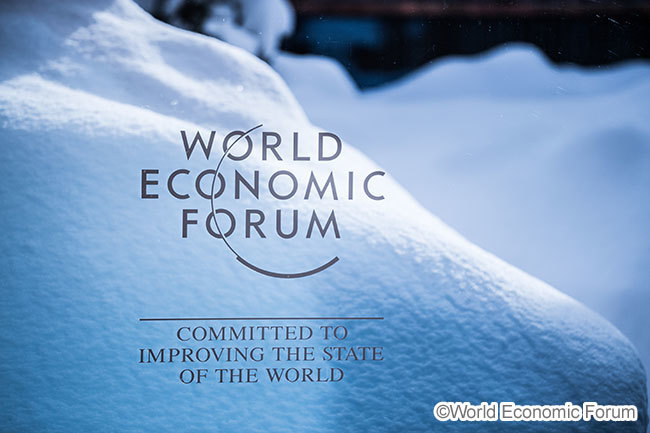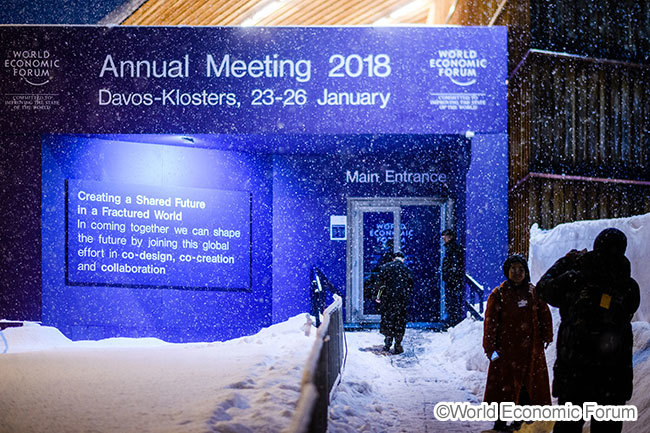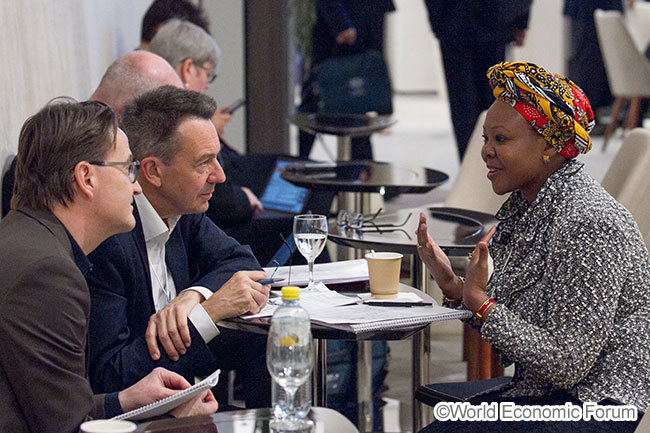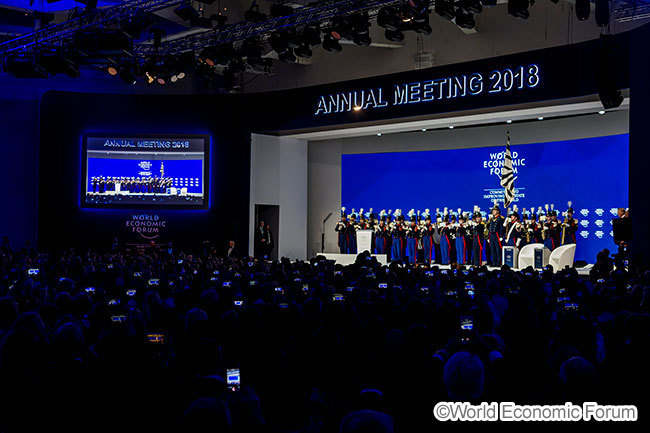Note: This website was automatically translated, so some terms or nuances may not be completely accurate.
Basic information and trends on the "Davos Conference" that moves the world

Davos, a small town in eastern Switzerland. Every January, the World Economic Forum (WEF) Annual Meeting, commonly known as the "Davos Conference," gathers over 3,000 global political and business leaders. This year, it made headlines as President Trump attended as a sitting U.S. president for the first time in 18 years.
Often called "a gathering of the world's top 1%," it's hard to grasp what actually happens there from the outside. Yet, this event that captivates global political and business leaders seems to hold various hints and values worthy of its status.
This time, we'll cover the basics of the Davos Conference and, through the 48th Davos Conference held January 23-26 this year, decipher this year's trends and explore the next key themes.
What is the Davos Conference?

Its official name is the World Economic Forum (WEF). Since it's often called the Davos Conference in Japan, many people likely think of it as just the event organizer.
The Davos Conference's mission is to solve global challenges through dialogue (committed to improving the state of the world). It was founded in 1971 by Klaus Schwab, who later became a professor of management at the University of Geneva.
Today, in addition to its Geneva headquarters, it has offices in New York, Beijing, Tokyo, and San Francisco, employing approximately 700 staff members. But are these staff only active for the annual meeting held each January? Not exactly.
The Davos Meeting originally refers to the annual meeting held by the World Economic Forum (they refer to themselves as the "Forum") in late January.
Other events include meetings addressing regional agendas such as Latin America and ASEAN, the "Annual Meeting of the New Champions" (commonly known as Summer Davos) held in China with a strong focus on technology themes in recent years, and the "Annual Meeting of the Global Future Councils," composed of councils of experts from various industries. Furthermore, it has 13 communities, making it far more than just an event-hosting organization.
Influential Reports
Representative reports published by the WEF include the "Global Competitiveness Report," "Gender Gap Report," and "Global Risks Report."
These are created through meticulous research in collaboration with partners from academia and business, earning them high global credibility. While the content can be complex, the WEF has recently focused on making communication more accessible and engaging, utilizing video explanations and social media. Its social media presence—http://wef.ch/facebook and https://twitter.com/wefは—is particularly useful for staying informed on trends, as key points are well-organized!
● The Global Competitiveness Report
Published annually in September, this report measures the international competitiveness of 137 countries and regions based on 12 evaluation criteria, including infrastructure, labor markets, business, education, politics, and economics. In 2017, Japan dropped one place from 8th to 9th. While excelling in market size, education, and infrastructure, the report pointed to the macroeconomic environment as its greatest weakness. It also highlighted areas for future improvement, such as restrictive labor regulations, tax rates, and insufficient innovation capacity.
● The Global Gender Gap Report
This report measures and ranks countries based on an index of gender equality across 14 indicators in four domains: economic participation, political participation, education, and health. It is published annually in November. In 2017, Japan ranked 114th out of 144 countries and regions surveyed, falling three places from the previous year to its lowest ranking ever. The primary reason cited was the lag in women's political participation.
●The Global Risks Report
This report examines major global challenges and risks, serving as a valuable reference for corporate crisis management planning. The 2018 edition, released just before this year's Davos meeting, highlighted global environmental crises, heightened geopolitical tensions, and cyber risks.
The Global Risks Report reveals that the risks of concern are not isolated but interconnected, becoming clearer the more one reads it. Details for all reports can be found on the WEF website.
Why do people flock to snowy resorts?

This year's Davos was hit by the heaviest snowfall in 80 years, causing massive delays for trains and cars. What normally takes about 30 minutes to travel to the neighboring town took three hours – it was extraordinary.
Some might wonder why world leaders bother traveling to snow-covered Davos in January. It's certainly not to ski between meetings! (In fact, Davos's ski slopes are empty during this season).
The global political and business leaders who attend find value in "meeting multiple top leaders in one place, saving the equivalent of several separate trips," "gaining insight into the latest global trends," and "clarifying their company's future strategy." Indeed, the Davos Forum features over 400 sessions addressing global challenges, alongside numerous other meetings and events.
Consequently, world-shaping leaders utilize the Davos meeting as a platform for their nation's IR (Investor Relations). Outside the conference halls, the PR battles between countries and global corporations are intensifying year by year.
(This topic will be covered in detail next time)
Is Participation Limited to the Top?

You might wonder who exactly can attend this prestigious gathering. First, you must be a WEF member. For companies to become members, they must meet certain criteria. Attending the event also requires a separate participation fee. Furthermore, attendees must hold executive positions, such as director or above.
Hearing that, some might think, "Board member or higher? That's not for me." However, the WEF also focuses on talent discovery.
For example, young people in their 20s have the chance to be selected for the Global Shapers Community. This community is formed around mentors who are responsible for hubs (bases) around the world for a two-year term. It primarily focuses on exchanging ideas and networking. They also sometimes organize events together with their local community.
As of January 2018, more than 7,200 people have been selected from 378 hubs in 158 countries around the world. In Japan, there are five hubs in Tokyo, Yokohama, Osaka, Kyoto, and Fukuoka.
For those in their 30s, there is the Young Global Leaders program. Participants must be under 35 at the time of selection. The program offers partnerships with Harvard University, Oxford University, and other institutions, as well as overseas expeditions (Greenland in 2018), providing an excellent opportunity to exchange ideas with next-generation leaders from around the world. Many participants have gone on to become prominent business leaders and politicians, such as French President Macron.
There is no specific framework targeting people in their 40s and above, but there is a community of social entrepreneurs selected by the Schwab Foundation, an affiliate of the WEF.
To join these communities, candidates must be nominated by themselves or others and pass a rigorous selection committee, but that doesn't mean readers have no chance at all. Communication in English is essential, but if young candidates who will lead the next generation of companies can apply to these communities and receive support to participate after being selected, they will likely gain valuable insights and tools to succeed in a globalized world.
What future trends can we see from the 2018 Annual Meeting?

As already reported in the media, leaders from over 70 countries, including U.S. President Trump and other G7 leaders, gathered.
This year's theme was "Creating a Shared Future in a Fractured World." The agenda featured over 400 sessions centered on "geopolitics" and the "Fourth Industrial Revolution" promoted by the WEF. Topics like "blockchain," "cybersecurity," and "artificial intelligence (AI)" were particularly prominent this year.
Opinions on the future of cryptocurrency remain divided. Interest in these topics remains high, and I expect ongoing, extensive discussions.
Additionally, Basic Income, which has been actively debated among academics for about two years, has now become a topic discussed by policymakers and corporate executives as well. Over 100 of the 400+ sessions are available to watch on YouTube.
The Fourth Industrial Revolution Led by the World Economic Forum
The term "Fourth Industrial Revolution," often abbreviated as "4IR" in English, has become increasingly common. Chairman Schwab published a book on this topic in 2016 and opened the Fourth Industrial Revolution Center in San Francisco in May 2017.
Its purpose is to foster open innovation across borders by freely disseminating and sharing people, technology, capital, and institutions, thereby contributing to new growth in the global economy. It also aims to overcome the "governance gap" – the disparity between technological progress and national institutional frameworks – and establish a hub for global innovation.
At the center, experts and companies conduct research on next-generation technologies essential for the future, such as AI, healthcare, and autonomous driving. It also hosts personnel seconded from the Japanese government and companies.
Furthermore, in July 2018, the world's second hub for the Fourth Industrial Revolution Center will open in Tokyo. Additional hubs are planned for locations worldwide, including the UAE and India.
(The Japan Center will be covered in detail in the next issue.)
Was this article helpful?
Newsletter registration is here
We select and publish important news every day
For inquiries about this article
Author

Mina Sakai
PR Consulting Dentsu Inc.
Stakeholder Engagement Bureau
Chief Consultant
After working on international and economic news programs at a broadcasting station, he joined the company. Leveraging his broadcasting experience, he engages in planning international public relations strategies, training, and lecturing for both government agencies and private companies. He also coordinates events and media coverage for expositions and international conferences. MBA (Manchester Business School).

